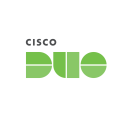For Samuel Rhea, senior director of product at Cloudflare, innovation can be heard throughout the Austin office’s hallways. Sometimes it’s an idea from a meeting manifesting on a whiteboard over lunch. Other times it’s a sales team member brainstorming with an engineer as they walk to the conference room. “You could listen to it in real time by sitting in the middle of any office,” said Rhea. In the era of remote work, collaboration looks different, but the philosophy remains consistent.
Nick Mankus of Jointly would agree. The head of implementation overhears engaged colleagues talking shop and bouncing ideas around the office constantly. That degree of immersion signals the collective mindset of a team intent on pushing past boundaries and fear. “The biggest challenge when building a culture of innovation is overcoming the fear of being wrong,” Mankus said.
Innovation is what all tech companies strive towards in product, market and societal influence. Rather than concrete mandates or massive spendings, it’s often the ancillary work environment and culture that foster innovative ideation. A lack of healthy day-to-day work habits and rituals — such as encouraging curiosity or promoting cross-functional collaboration — presents the most pressing obstacle to setting such goals, according to Harvard Business Review.
From establishing core values and unifying principles to building trust and scaling for transparency, successful companies that set industry trends are ones where the cultural foundation is layered by employees. Supporting structures — asking the right questions, investing in the right priorities and bringing together the right people — help solidify the nebulous concept of innovation. In turn, the creatively charged and properly motivated workforce is primed to realize novel ideas and processes.
“Innovation doesn’t happen in a vacuum — it responds to real and evolving problems,” said Cloudflare’s Rhea. Though there’s no one answer to innovation, Built In Austin talked to four local companies to see how they’ve cultivated cultures conducive to its development — in their employees and their values.

Cloudflare is a security, performance and reliability company running a popular global infrastructure network, powering anything connected to the Internet.
What are some signs that a company actually has a culture of innovation?
Companies that obsess about solving customer problems create a culture of innovation along the way. The best sign that a company has accomplished this is when a customer says, “You really listened to the challenge I had and I can’t believe you solved it so quickly.”
At Cloudflare, we serve millions of customers across industries from small teams to some of the world’s largest companies. Their problems constantly evolve. For us to keep pace and grow with them, we have no choice but to learn and build faster.
In practice, we make this possible by including every member of the entire company in the product journey. We all share a single goal of solving customer problems, and that means that anyone can and should contribute to how we do that, regardless of their title or role. No team is in a supporting function. No one is discouraged from contributing an idea. We learn from customers, we listen to each other and we build together.
Everyone here ships customer-obsessed software — they just don’t all write code.”
Culture is something every employee contributes to. How do you personally make space for new ideas and innovative ways of doing business?
We consider every employee to be part of our larger product team. What I mean by this is, everyone at Cloudflare shares a single mission: to help build a better Internet. A big part of this is asking, “How do we discover customer problems that we can uniquely solve and how do we build as quickly as possible to solve them the right way?”
Our sales team does not just sell products. They talk to customers to uncover the challenges they face. Product teams constantly ask for their input as we determine where to focus. Our support team does not just close customer tickets. They review why the ticket was filed and talk to partners in engineering to create long-term improvements.
Even team members in functions that do not interact with customers take part. Our IT teams trial and break our newest products before we put them in customer hands so that we can learn and improve. Before we talk to customers and prospects in the financial space, we chat with our finance team to learn about challenges in the industry. Everyone here ships customer-obsessed software — they just don’t all write code.
Getting this right requires empathy and humility. Empathy to learn from customers and other teams. Humility to recognize that we can assemble lasting solutions for our customers by working together.
What are some of the challenges your company has faced in developing or maintaining this type of culture, particularly as you’ve grown?
When Cloudflare had its office locations filled with team members, with everyone working in-person in our offices every weekday, we could learn from customers and build solutions with little friction. A sales team member with a customer call in the morning could invite an engineer to join as they walked to the conference room. Ideas from that meeting could become a sketch on a whiteboard over lunch and a prototype in the afternoon. Our culture of innovation was not something we created — it just followed our obsession over building answers to customer problems.
Today, we have over 2,700 employees spread out across 17 offices, and as a result of the global pandemic, that means that not everyone works together in those spaces. Instead, we document what we learn from customers so we can share it with anyone inside the team. We take the time now to write down what happened in an internal meeting so teammates can catch up. We share customer stories in our company-wide meetings. We are still collaborating, just in other mediums.
A lot has changed about how we work, but our shared goal of solving customer problems has not; that part is simple. We just have to take some new steps to make sure we replicate that exchange of ideas.
Duo Security is a multi-factor authentication platform and secure access provider.
What are some signs that a company actually has a culture of innovation? What does that look like in practice?
Experiment, measure, repeat. A culture of innovation encourages and nurtures this approach through an environment of trust, psychological safety and continuous iteration. Some key signs are open and honest communication, constructive feedback and strong support between teammates and across other teams and orgs, as well as nurturing responsible risk-taking by making space for creative solutions and the means to experiment without negative consequences. People need to feel like they have agency to experiment with new ideas without fear of blame or punishment if they don’t work out. Having the data to measure what failed and why also helps teams improve when things don’t go quite right, and allows them to quickly iterate and respond to dynamic challenges as they arise.
Culture is something every employee contributes to. How do you personally make space for new ideas and innovative ways of doing business?
Building trust on our teams is the foundation for everything. It allows us to more openly communicate, collaborate and engage with each other on new ideas and concepts. Building a connection to the customer and our overall goals is also important for context and a sense of ownership. If we fundamentally understand the problems our users are struggling with, it helps the teams function more independently and in new ways to deliver value. With this, we make sure there is dedicated time and space for experimentation and trying out new ideas. Research days have helped nurture the creative spark within the team and they often lead to new approaches and projects.
What are some of the challenges your company has faced in developing or maintaining this type of culture, particularly as you’ve grown?
Innovating at scale has been a challenge as a lot of the things that make for a great culture of innovation within a small team or group don’t translate in the same way to a large organization. Communication and collaboration need to be more intentional. Without insight into what other teams are working on and a view into the larger strategy for the group, you may end up with many teams working toward individual solutions or solutions in search of a problem. Ensuring that the right teams and individuals are talking regularly up front to gather context allows us to better work independently.
With a lot of new faces and larger teams, assuming positive intent has also been vital to ensure we have good relationships and effective collaboration. Fortunately we have many passionate advocates for this culture of kindness and openness at all levels of our organization. This ensures that everyone is accountable for the behaviors we want to emphasize.
Building trust on our teams is the foundation for everything.”

Aceable is a mobile education platform with a focus on licensing courses such as real estate and driving.
What are some signs that a company actually has a culture of innovation? What does that look like in practice?
Creating a culture of innovation is no small feat. First, innovation is woven into the business foundation with the creation of core values. One of our core values is #Seek2Understand: “We attempt to understand before trying to be understood; we listen and synthesize the ideas of all Aces regardless of title.” Our leaders and employees truly practice #Seek2Understand while collaborating in team and project meetings.
Once the culture of innovation is created, it is important to maintain and enhance it by ensuring all employees’ wellness — physically, mentally and emotionally. When an individual is well or whole in all other areas of their life, it allows them the opportunity to get creative, think outside the box and innovate. To promote wellness, Aceable builds more work-life balance by offering more days off. Starting in 2020, we added at least one day off a month. In 2021, we added five days of winter break. We have kept all these additional holidays, and just this year instituted half-day Fridays in the month of May, which we celebrated as a big company win. As a mom of three, these additional days allow time for me to recharge.
If my work is overloaded, there is no opportunity for innovation.”
Culture is something every employee contributes to. How do you personally make space for new ideas and innovative ways of doing business?
Personally, I make space for new ideas by carving out time blocks to think and research the issue. I leverage external partners when possible. I loop my team in to brainstorm ideas. Just this past week, we’ve identified a large meeting that wasn’t running smoothly. I had a few ideas, my manager had a few ideas, and then, after I ran those ideas past a teammate, she added even more ideas. Lastly, if my work is overloaded, there is no opportunity for innovation. At that point, if there is no time for innovation, the workload needs to be examined, then offboarded or delegated.
What are some of the challenges your company has faced in developing or maintaining this type of culture, particularly as you’ve grown?
The sudden switch to remote and the uncertainty of the past two years definitely created the biggest challenge in maintaining a culture of innovation at Aceable. We truly had to #ExhibitGrit, get creative and innovate how we work. We changed how we met from in-person to virtually, how we engage both in meetings and for fun and how to maintain the Aceable culture with a hybrid model of working.

Jointly is a digital real estate platform that aims to connect agents with their clients and third parties.
What are some signs that a company actually has a culture of innovation? What does that look like in practice?
A major sign that innovation is embedded in the culture is when you are constantly surrounded by solutions and ideas. When you are in a meeting, walking through the halls or overhearing small talk, you hear ideas being bounced around. These are all signs that the team is actively engaged in building a product collectively.
In practice, this comes down to ownership of solutions. When people have skin in the game, they become highly engaged in the outcome of their efforts. For this to happen, leaders need to have faith in their team to develop robust solutions, and that starts by giving them full ownership over their work. Establishing the concept of “this is your solution” in someone’s mind allows them to bring their own perspective to their solutions.
Culture is something every employee contributes to. How do you personally make space for new ideas and innovative ways of doing business?
By embedding innovative thinking into my day-to-day work. I take every opportunity to evaluate why we made the choices to get to our current state. The thought of “how can we be doing this better?” is usually top of mind.
I also set aside time to think about our current product as if we had to start from scratch. Products can have long life cycles and initial assumptions were made with information that we do not have today. Simply asking the question of “if we had to do it all over again” can potentially reveal new paths to innovative solutions.
Lastly, I pose raw ideas to the team to see if they can spark something new and interesting. This exposes the different perspectives that we have throughout the company and can morph these innocuous thoughts into full-fledged initiatives.
When people have skin in the game, they become highly engaged in the outcome of their efforts.”
What are some of the challenges your company has faced in developing or maintaining this type of culture, particularly as you’ve grown?
There is always a risk of being wrong. Learning how to live with that risk for the sake of innovating is something that can be difficult to overcome individually and difficult to implement at an organizational level.
Overcoming this fear requires a lot of coaching and discipline. Knowing how to separate developing new concepts and actually making them a reality takes a level of patience. Many ideas can be left on the whiteboard and in notebooks, but some can be implemented almost immediately. We have developed a system where we allow those creative thoughts to be thrown around while still focusing on what we need to do.












